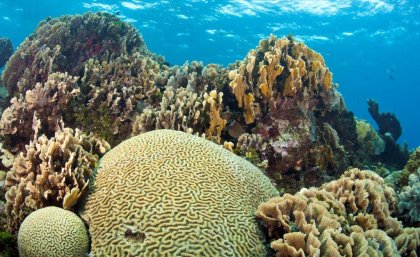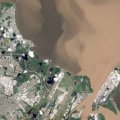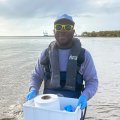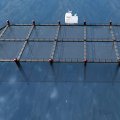
A new study led by University of Queensland researchers has found that more than 17,000 marine species worldwide remain largely unprotected.
The study, which is the first comprehensive assessment of protected areas coverage on marine life, appears in the international journal Scientific Reports.
“The process of establishing marine protected areas (MPAs) that could safeguard marine diversity is not trivial as they impact livelihoods,” said the study’s lead author Dr Carissa Klein of the UQ School of Geography, Planning and Environmental Management (GPEM), and the Australian Research Council Centre of Excellence for Environmental Decisions (CEED).
“It is essential that new MPAs protect biodiversity while minimising negative social and economic impacts,” she said.
“The results of this study offer strategic guidance on where MPAs could be placed to better protect marine biodiversity.”
The authors looked at the ranges of some 17,348 species of marine life, including whales, sharks, rays and fish, and found that 97.4 per cent of species have less than 10 per cent of their range represented in marine protected areas.
Nations with the largest number of “gap species” or species whose range lie entirely outside of protected areas include the US, Canada, and Brazil.
Despite these results, the authors say the study underscores opportunities to achieve goals set by the Convention on Biological Diversity to protect 10 per cent of marine biodiversity by 2020.
The authors say that it is imperative that new MPAs are systematically identified and take into account what has already been protected in other places, in addition to socioeconomic costs of implementation, feasibility of success and other aspects driving biodiversity.
Co-author Dr James Watson of UQ’s School of GPEM and the Wildlife Conservation Society said timing was important.“As most marine biodiversity remains extremely poorly represented, the task of implementing an effective network of MPAs is urgent,” he said.
“Achieving this goal is imperative not just for nature but for humanity, as millions of people depend on marine biodiversity for important and valuable services.”
Australia's exclusive economic zone has 1846 species that are very poorly represented in MPAs.
“There is an opportunity for Australia to make a substantial contribution to improving the status of marine biodiversity protection globally by systematically placing new MPAs,” Dr Klein said.
However, she warns that MPAs are not a panacea for conserving marine biodiversity.
For some species, the best conservation outcome may be achieved with other strategies, including fisheries regulations and land-use management, which is underway in the Great Barrier Reef.
The study’s authors include scientists from The University of Queensland, CEED, University of California Santa Barbara, the National Center for Ecological Analysis and Synthesis, Imperial College London and the Wildlife Conservation Society.
High resolution images are available here.
Media: Carissa Klein, +61 401 582 606; c.klein@uq.edu.au; James Watson, +61 409 185 592; jwatson@wcs.org.










